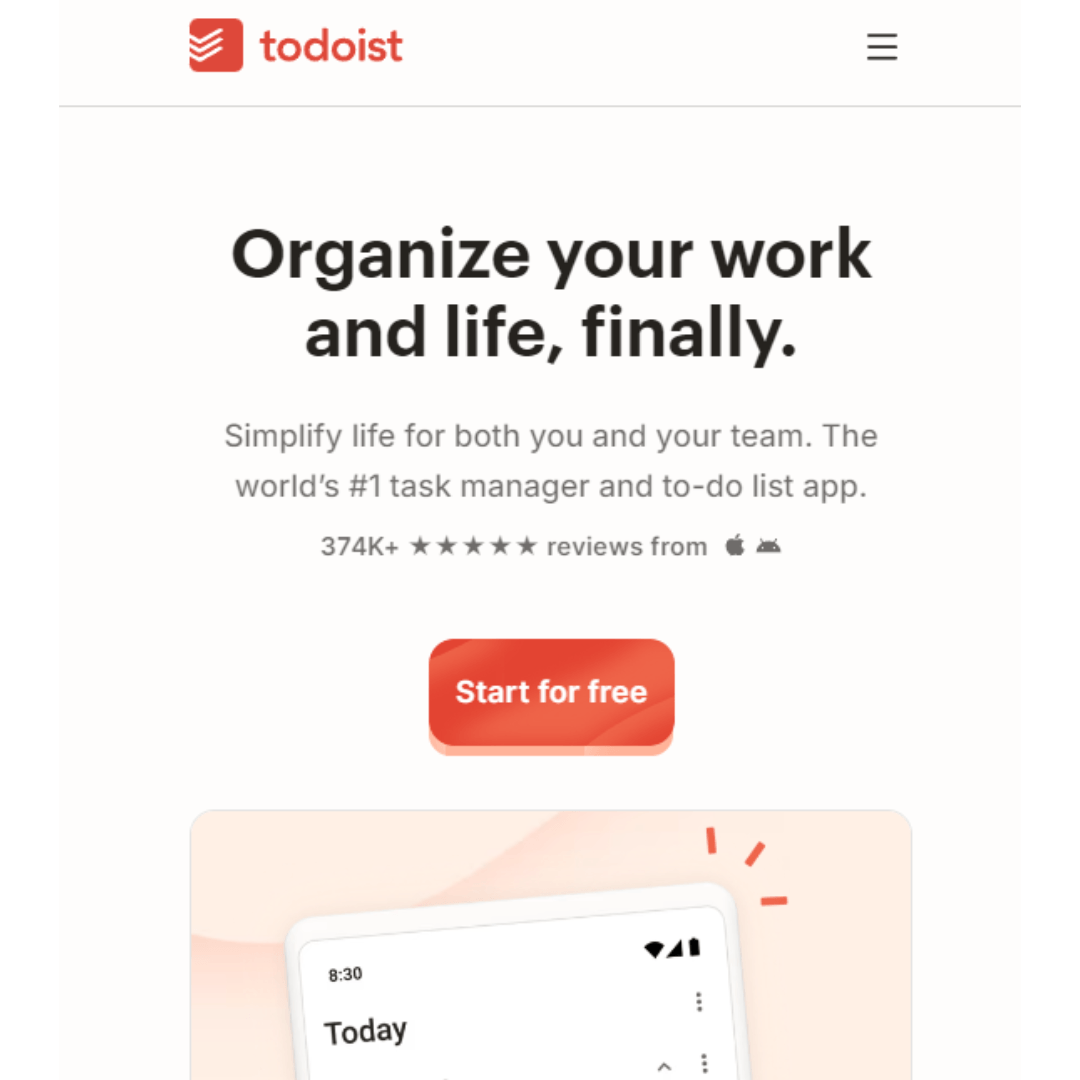Top Time Management Activities For A Productive Day
Top Time Management Activities For A Productive Day
Managing time effectively is crucial for achieving productivity and maintaining a balanced life in today's fast-paced world.
By incorporating Time Management Activities into your daily routine, you can maximize your workday, reduce stress, and accomplish more with less effort.
This post examines the best techniques and activities for setting priorities, staying on target, and making the most of every minute, all of which contribute to a more successful and satisfying day.
Top Time Management Activities For A Productive Day
Good time management is essential for a productive day. By incorporating specific strategies and activities into your routine, you can optimize your workflow, stay focused, and accomplish more with less stress.
Here are some top-time management activities to help you make the most of your day:

1. Prioritize Tasks With A To-Do List
Prioritizing tasks with a to-do list is one of the most effective time management strategies for a productive day. Make a list of everything that has to be done and rank the jobs according to their significance and due dates.
This approach helps you organize your day and tackle the most critical tasks, reducing the risk of missing deadlines or overlooking important responsibilities.
Sorting jobs into high, medium, and low priority will help you focus on the important things and better use your time and energy.
A well-organized to-do list gives you a clear picture of your workload and helps you feel less stressed and overwhelmed.
When you do things and cross them off your list, you feel successful, which might inspire you to keep going and be productive all day.
2. Set SMART Goals
Setting SMART goals—which stands for Specific, Measurable, Achievable, Relevant, and Time-bound—is a great tactic for productivity and efficient time management. This acronym offers a precise and organized framework for creating goals.
- Specific: Define your goal precisely so you know exactly what to achieve.
- Measurable: Establish criteria for measuring progress so you can track your success and stay motivated.
- Achievable: To increase the likelihood of success, ensure your goal is realistic, considering your resources and constraints.
- Relevant: Align your goal with broader objectives, ensuring it contributes meaningfully to your plans or aspirations.
- Time-bound: Establish a deadline to instill a sense of urgency to keep you dedicated and focused.

3. Use The Pomodoro Technique
The Pomodoro Technique is a time-management strategy that divides work into digestible chunks to increase productivity and sustain attention.
Work is done in concentrated 25-minute blocks, or “Pomodoros,” interspersed with 5-minute breaks. After finishing four Pomodoros, rest longer to refuel, usually 15 to 30 minutes.
This technique helps you maintain high concentration levels by creating a structured work rhythm. It makes it easier to dive deep into tasks without feeling overwhelmed.
Regular breaks prevent mental fatigue and burnout, ensuring sustained daily productivity. Focusing intensely for short periods allows you to work more efficiently and steadily progress on your tasks.
Additionally, the Pomodoro Technique encourages reflection on how much time tasks require, helping you become more aware of your work habits and allowing for better planning and time allocation in the future.
4. Time Blocking
Time blocking is one of the most effective time management activities for a productive day, as it allocates specific periods to tasks, ensuring focused attention and reducing the risk of multitasking.
You create a structured plan for your day by scheduling tasks into dedicated time blocks, ensuring that each task receives focused attention.
This method helps you stay organized by preventing overlap between activities and reducing the likelihood of multitasking, which can decrease productivity.
With time blocking, you can allocate time based on task priority, ensuring that essential activities are addressed first and given the time they deserve.
Additionally, time blocking helps create a clear boundary between work and rest, preventing burnout by ensuring that breaks and downtime are scheduled.
Visualizing your day in blocks allows you to manage your time more efficiently, maintain focus, and ensure that all important tasks are completed without feeling overwhelmed or rushed.

5. Leverage Digital Tools
Digital technologies can improve productivity and time management. Apps like Google Calendar, Todoist, and RescueTime can streamline your workflow by providing structure and insight into how you spend your time.
- Google Calendar: This scheduling tool allows you to organize your day by setting appointments, reminders, and deadlines, ensuring you never miss important events.
- Todoist: An app for task management that keeps your to-do list tidy and organized by assisting with task prioritization, tracking, and listing.
- RescueTime: RescueTime tracks your digital activities, providing insights into your habits to help sharpen focus and boost productivity.
By using this tool daily, you can better manage your time, stay on top of tasks, and make informed adjustments to your work habits, leading to a more productive day.
6. Review And Reflect
Reviewing and reflecting at the end of the day are crucial time management activities for a productive day. They help you assess accomplishments and identify areas for improvement.
By taking a few moments to determine what you’ve accomplished, you clearly understand your progress and recognize the tasks you've completed.
This reflection also allows you to identify areas where you might have faced challenges or where time could have been better utilized.
Reflecting on your day helps you pinpoint strategies that worked well and those that need adjustment. Whether it’s improving your task prioritization, reducing distractions, or managing your time more effectively, this daily review helps you make informed changes to enhance your productivity in the future.
This technique also encourages accountability and ongoing development, allowing you to gradually enhance your strategy and accomplish more success in your assignments and objectives.

7. Implement The Two-Minute Rule
The Two-Minute Rule is a straightforward time management technique that greatly increases productivity. It states that if work can be completed in two minutes or less, it should be done immediately.
This approach helps you quickly tackle small tasks—like responding to an email, making a brief call, or organizing your desk—before they accumulate and become overwhelming.
Addressing these quick tasks immediately prevents them from piling up and cluttering your to-do list. This not only keeps your workload manageable but also frees up mental space to focus on more substantial tasks.
The Two-Minute Rule is particularly useful for maintaining momentum throughout the day, as it allows you to accomplish several small tasks efficiently, giving you a sense of progress and keeping you motivated to tackle larger, more time-consuming projects.
8. Schedule Breaks And Downtime
Scheduling breaks and downtime is crucial for maintaining productivity and preventing burnout. Regular breaks allow you to step away from work, recharge, and return with renewed focus and energy.
Without these breaks, sustained work periods can lead to mental fatigue and decreased efficiency. Incorporate short breaks throughout your day, such as a 5-10 minute pause every hour, to stretch, walk, or relax.
Additionally, schedule longer breaks for meals and personal time to disconnect and rejuvenate fully. This balanced approach helps to manage stress, improve concentration, and sustain performance.
Planning breaks and downtime into your schedule creates a more sustainable work routine that supports long-term productivity and well-being.
Regular rest enhances your ability to focus and contributes to better overall health and job satisfaction, leading to a more effective and enjoyable workday.

9. Practice The 80/20 Rule
The Pareto Principle, also known as the 80/20 Rule, recommends focusing on the 20% of work that will yield 80% of the desired results.
This powerful time management strategy encourages us to focus on the 20% of work that will yield 80% of the desired results.
This idea urges you to first list the high-impact tasks that will have the greatest impact on achieving your objectives and prioritize them.
Concentrating on these key tasks can maximize productivity and efficiency, ensuring time and energy are spent where they have the greatest effect.
This method assists you in avoiding becoming engrossed in low-impact, less significant jobs that could take up time but yield little benefit.
Practicing the 80/20 Rule requires regularly assessing your tasks to determine which drives the most significant outcomes.
By prioritizing these tasks, you can streamline your workload, achieve better results with less effort, and ultimately become more productive and successful in reaching your objectives.
Time Management Exercises
Time management efficiency is critical to stress relief and productivity. Engaging in targeted exercises can help you refine your time management skills, enhance focus, and improve efficiency.
Here are some unique practical exercises designed to help you better organize your time and achieve your goals more effectively:
1. Reverse Planning
Reverse Planning involves starting with a project's end goal and working backward to outline the necessary steps and deadlines.
Initially visualizing the finished outcome, you may break the project into more manageable tasks and identify the benchmarks needed to accomplish the intended target.
This exercise helps clarify priorities, ensures that all essential steps are accounted for, and creates a realistic and actionable plan, making it easier to stay organized and focused throughout the project.

2. Time Audit Challenge
The Time Audit Challenge is a practical example of time management activities for a productive day, helping you track and analyze how you spend your time to optimize efficiency and eliminate distractions.
By recording activities in detail, you can analyze where your time is going and identify patterns or time drains. Review the data at the end of the week to pinpoint inefficiencies or distractions.
This insight allows you to adjust your schedule, eliminate unproductive habits, and optimize your time management, improving productivity and better time use.
3. The “Zero Inbox” Challenge
The “Zero Inbox” Challenge involves setting aside a specific time each day to clear your email and message inboxes, aiming for “zero inbox” status.
This exercise helps you manage digital communication effectively by regularly addressing and organizing messages, preventing them from accumulating and becoming overwhelming.
By dedicating focused time to this task, you maintain better control over your communication, reduce stress related to unread messages, and ensure a more organized and efficient workflow.

4. The 90-Minute Deep Dive
The 90-minute Deep Dive involves scheduling a 90-minute block each day solely for uninterrupted, focused work. During this period, dedicate yourself to tackling complex tasks or engaging in creative thinking.
Eliminating distractions and concentrating fully can help you progress significantly on important projects. This extended focus time enhances productivity and allows you to dive deeply into challenging work, leading to more efficient task completion and improved overall performance.
5. Role Reversal
Role Reversal is an insightful time management activity for a productive day. It offers external feedback to identify blind spots and improve organization and time allocation.
Pomodone is a productivity tool that applies the Pomodoro Technique and connects with task management applications.
This time-management strategy breaks up study sessions into short, focused bursts—typically 25 minutes—sprinkled with brief pauses. Students who use this strategy can better focus, reduce procrastination, and efficiently manage their workload.
6. Daily Reflection Ritual
The Daily Reflection Ritual involves starting or ending your day with a short, intentional practice, such as meditation or a gratitude exercise.
This ritual helps center your focus, clear your mind, and set positive intentions for the day’s tasks or reflect on the day's accomplishments.
By incorporating this practice, you create a mindful pause that enhances clarity, reduces stress, and aligns your mindset with your goals. This leads to improved productivity and a more balanced approach to your daily activities.
Time Management Tools For Students
Students can greatly benefit from time management software when managing their personal lives, extracurricular activities, and academic obligations. These are a few useful tools:

1. Todoist
With Todoist, a robust task management tool, students can stay organized by centrally organizing their projects, assignments, and due dates.
It allows users to set priorities, break tasks into smaller sub-tasks, and track their progress over time. With its intuitive interface, students can easily categorize tasks by subject or project, set due dates, and even integrate with calendars. Todoist's flexibility and ease of use make it an ideal tool for students to stay on top of their workload.
2. Pomodone
Pomodone is a productivity tool that applies the Pomodoro Technique and connects with task management applications.
This time-management strategy breaks up study sessions into short, focused bursts—typically 25 minutes—sprinkled with brief pauses.
Students who use this strategy can better focus, reduce procrastination, and efficiently manage their workload.
By syncing with tools like Todoist or Trello, Pomodone streamlines task tracking while promoting a balanced study rhythm. This makes it easier for students to stay focused and productive throughout their study sessions.

3. Google Calendar
Google Calendar is a vital scheduling tool for students. It helps them centrally arrange lessons, study sessions, and crucial reminders.
Thanks to cross-device syncing, students can view their schedules from any device, helping them stay on track wherever they are.
Using Google Calendar, students can stay organized, effectively manage their time, and never miss important assignments or deadlines.
It has features like colour-coded events, notifications, and sharing calendars.
4. Evernote
Evernote is a versatile note-taking app that helps students organize class notes, research, and ideas in one convenient place.
It allows users to create and categorize notes, attach files, and add images or audio recordings. With its powerful search functionality, students can quickly find specific information within their notes.
Evernote syncs across devices, ensuring students can access their notes anytime. This makes it an ideal tool for keeping all academic materials organized and readily available.

5. Trello
Trello is a visual project management tool that helps students collaborate on group projects and efficiently organize tasks. Students can make lists, cards, and boards to organize their work, monitor their progress, and rank their assignments.
Each card can include due dates, attachments, and checklists, making managing individual or team responsibilities easy.
Trello's drag-and-drop interface and real-time collaboration features make it ideal for keeping projects organized and ensuring everyone stays on the same page.

6. ZenKit
With its many perspectives, such as calendars, mind maps, and Kanban boards, ZenKit is a flexible project management application that assists students in managing their workload. Because of this versatility, users can select the layout that best fits their way of managing tasks.
ZenKit’s customizable features enable students to track assignments, deadlines, and projects efficiently, adapting the tool to their needs.
With its comprehensive approach, ZenKit helps students stay organized and manage their tasks effectively across different visual formats.
7. Focus@Will
Focus@Will is an app designed to enhance concentration through scientifically engineered music tracks. These tracks are specifically crafted to boost productivity and focus, tailored to various types of work and personal preferences.
Focus@Will provides background music that supports cognitive function to help students minimize distractions and stay engaged with their tasks.
The app’s personalized approach ensures users find the right auditory environment to improve their concentration and efficiency.
Time Management Activity Sheet
Here’s a template for a Time Management Activity Sheet that you can use to organize your daily tasks and track your progress.
Time Management Activity Sheet.pdf
Conclusion
In conclusion, time management skills are essential for a productive day. Establishing clear goals, eliminating distractions, taking frequent breaks, and prioritizing work may increase productivity and allow you to do more in less time.
Remember that working more efficiently involves using your time rather than wasting it.
Regularly implementing these methods can accomplish your daily objectives and maintain a positive work-life balance.
Embrace these habits, and you'll find yourself more focused, less stressed, and better equipped to handle whatever challenges come your way.
I trust you enjoyed this article on Top Time Management Activities For A Productive Day. Please stay tuned for more blog posts soon. Take care!
JeannetteZ
>>>Please click here to read my all-inclusive article about Lessons That Will Teach You All About Stress<<<
>>>Are you interested in Natural Healing And Stress Relief through Herbs? Please click here for my #1 Recommendation<<<
Your Opinion Is Important To Me
Do you have thoughts, ideas, or questions? I would love to hear from you. Please leave me your questions, experiences, and remarks about this article, Top Time Management Activities For A Productive Day, in the comments section below. You can also email me at Jeannette@Close-To-Nature.org.
Disclosure
This post may contain affiliate links. As an Amazon Associate and other affiliate programs, I earn from qualifying purchases at no extra cost to you. Please read my full affiliate disclosure.
You might also enjoy these blog posts:
Best Tips To Grow Hibiscus In A Pot








